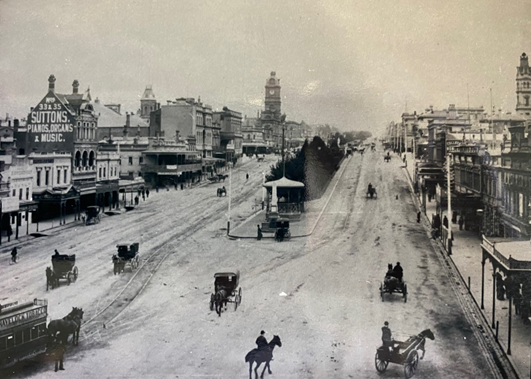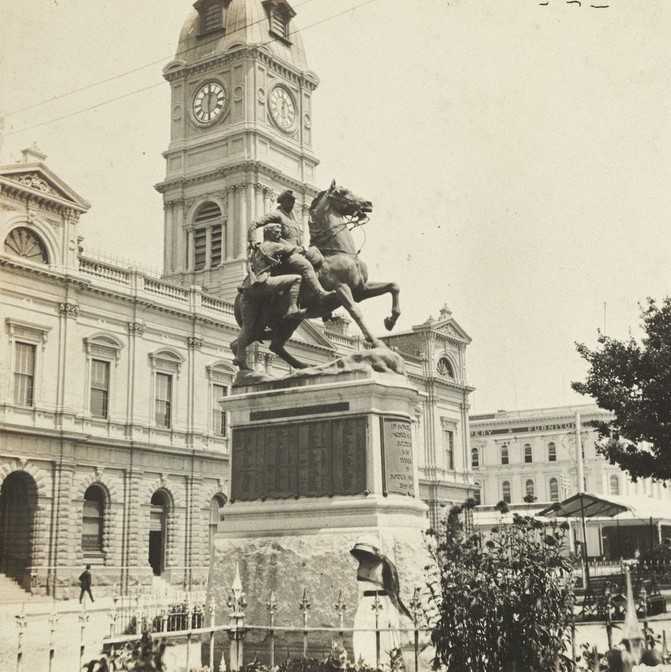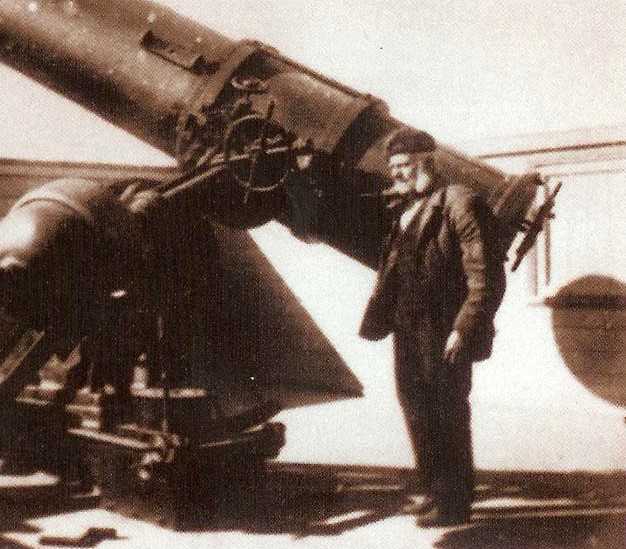Throughout Ballarat’s long history it has hosted numerous special occasions. One of these occurred over a weekend in February 1898 when Ballarat hosted delegates from the Australasian Federal Convention. As Sweely notes, “Ballarat was vying to become the capital of the prospective Commonwealth.” (1) A visit by these delegates from this convention was considered a crucial step in this process.
Ballarat residents enthusiastically supported the idea of Ballarat becoming the nation's capital. In a letter to the editor of the Ballarat Star on 5 May 1897 a resident wrote, “I urge our mayors and councillors to be vigilant over this important matter. It is worth fighting for. It is an opportunity that will never occur again.” (2)
Speaking to his fellow delegates during the third session of the Australasian Federal Convention, on the 8th February 1898 just prior to them visiting Ballarat, Sir William Lyne said, “we have been invited to visit Ballarat on Friday and someone has whispered to me that this is to give the representatives a good opinion of Ballarat with a view to it being selected as the federal capital. I hope that the climate of Ballarat is better than the climate of Melbourne has been for the last few days. If not, it will have a very poor show of being selected the federal capital.” (3)
Melbourne was experiencing a late summer heatwave at this time. The reporters of the Ballarat Star on 12 February noted that Ballarat was also experiencing the same heatwave gripping Melbourne. (4). Fortunately for all concerned a weather change occurred during the weekend bringing relief from the heat.
Sweely points out that, "among the many reasons Ballarat was seen as major contender for the new federal capital in 1898 was its national prominence. Many colonials could associate the city with gold, the Eureka Stockade and democracy, gardens, Lake Wendouree and civic amenity.” (5)
Again, as Sweely writes, “the convention delegates and officials, including notable representatives from the State of Victoria and the City of Melbourne were to take the train from Melbourne on Friday 11 February 1898.” (6) Up until the morning of the trip it was assumed that one train would suffice for the trip to Ballarat. Upon the realization that 200 people would be travelling to Ballarat, a second special train was ordered to go to Ballarat. As Sweely notes, “unfortunately the train arrived so late that the festivities at Ballarat’s Alfred Hall had to be substantially delayed and reorganized.” (7)
The Ballarat Courier in its edition of 12 February wrote, “the reception accorded the Federal Convention delegates and a large parliamentary party on their arrival from Melbourne last night was of a most enthusiastic character. The people of Ballarat thronged the railway station, the numerous points of advantage about the station platform were crowded.” (8)
The delegation proceeded to Ballarat’s Alfred Hall for the delayed banquet. Ballarat West Mayor C.C. Shoppee welcomed the delegation from Melbourne as well as the local invitees to the reception. As Sweely notes, “in his welcoming address the mayor said that Australia would see the realization of the convention's efforts.” (9)
In reply to the Mayor’s welcome the Hon Edmund Barton, as Sweely notes, “overwhelmed those gathered with adulations about the Victorian provincial city, its great industries and fertile fields and evidence of prosperity.” (10) Edmund Barton would be elected Australia’s first Prime Minister. The mayors of Ballarat East and Sebastopol offered their personal welcome to the delegation.
The President of the convention, the Hon. Charles Kingston from South Australia, finished the formalities of the evening by saying, “Ballarat was distinguished as the Australian City had done many things to support and assist the development of the colony.” (11).
The two Ballarat papers, the Star and the Courier, had extensive reporting in their issues of Saturday 12 February 1898 of the delegation’s visit. The Star’s headline was, “The Federal Capital. Displaying Ballarat’s Advantages. Visit of the Federal Convention. A Round of Entertainments.” (12) The Courier meanwhile ran with, “Federation. A united Australasia. One People One Destiny. Convention delegates visit Ballarat. An Historic Visit.” (13) Some of the social engagements that had been arranged included a visit to some Ballarat mines, going to Victoria Park, a visit to Lake Wendouree and the Botanical gardens where an afternoon tea for 300 guests had been arranged.
A reception had also been organized by the local branches of the Australian Natives Association (A.N.A). As Sweely pointed out, “Frank Besmeres, President of the local branch of the ANA, had unequivocally done much to ripen the spirit of federation in the district and the forthcoming constitution would make Australians the freest and most independent people on the face of the earth.” (14)
Anne Beggs Sunter has pointed out, “the Australian Natives’ Association (A.N.A) played a vital role in educating the public about federation influencing them to support federation referenda. Its influence was strongest in Victoria, its home state, and its impact was strongest of all in the Ballarat area during the 1880s and 1890s.” (15)
From all the social engagements organized then delegates must have been exhausted as they boarded the train on Sunday 13 February 1898 to travel back to Melbourne.
Speaking back in Melbourne on Monday 14 February 1898 to the third session of Australasian Federation Convention the Hon. Alfred Deakin said, “I believe Ballarat is an intensely federal city.” (16) Alfred Deakin became the first federal member for Ballarat. He was also elected Australia’s second Prime Minister.
Beggs Sunter explains that “in choosing Ballarat as his seat, he acknowledged the strong support of the Ballarat people with a radical political tradition which began at Eureka, and, especially he acknowledged the work of the local A.N.A branches, which had ensured that Ballarat returned the highest vote in favour of federation in the whole nation.” (17)
Regarding the vote in support of the 1898 federation referendum, Weston Bate notes, “Ballarat voted 97 percent in support of the referendum. This support showed that Ballarat was built for federation and that its citizens believed their ideas were vital and worthy and that their goals and beliefs were worth fighting for as they displayed at the Eureka Stockade.” (18)
Ballarat missed out on being selected as the site of the federal capital. Its citizens had the knowledge that they had tried their very best to showcase why Ballarat should be selected as the site of the federal capital. In his annual report to the City Ballarat Council, Mayor Shoppee wrote, “never in the history of Ballarat has the city been honored one time by the presence of so many distinguished personages. Their visit was a complete success.” (19)
As Sweely sums up,” Ballarat had done its very best to entertain and court their convention guests. While it was not destined to become the site of the Federal Capital of Australia it did play a vital role in the discussions in the culmination in the ultimate selection of the site.” (20)
Simon Jacks
Australiana Research Librarian
Link to a letter to the editor, Ballarat Star 5 May 1897, p. 2 encouraging the mayor and councilors to support Ballarat being the federal capital.
https://trove.nla.gov.au/newspaper/article/210365902?searchTerm=Ballarat%20Federal%20Capital
Link to article Ballarat Star February 12, 1898, p.4. About the delegation's visit to Ballarat.
https://trove.nla.gov.au/newspaper/page/21730430
Link to an article from the Bendigo Advertiser 5 March 1902 p.5 on why Ballarat was not selected as the site of the Federal Capital: https://trove.nla.gov.au/newspaper/article/88614607?searchTerm=Ballarat%20Federal%20Capital
Link to an article in Ballarat Star 14 February 1898, p. 4 outlining the visit of the delegation to Ballarat: https://trove.nla.gov.au/newspaper/page/21730434
Footnotes:
(1) Gay Sweely. ‘Federation and Fizz’. Ballarat’s bid to become the A.C.T. in The New Federalist. The Journal of Australian Federation History. Number 3. June 1999, pp 37-41
(2) Ballarat Star 5 May 1897 p.2
(3) Records of the Australasian Federal Conventions of the 1890s, Third Session. Thursday 8 February 1898, p 53
(4) Ballarat Star 12 February 1898, p 4
(5) Sweely, pp 37-38
(6) Sweely, p 38
(7) Sweely, p 38
(8) Ballarat Courier 12 February 1898, p 3
(9) Sweely, p 38
(10) Sweely, p.38
(11) Sweely, p. 39
(12) Ballarat Star 12 February 1898, p 4
(13) Ballarat Courier 12 February 1898, p 3
(14) Sweely, p 39
(15) Anne Beggs Sunter. Engendering public debate on Federation: the role of Australian Natives Association.in Becoming Australian: the movement towards Federation in in Ballarat and the nation. Kevin Livingstone, Richard Jordan and Gay Sweely editors. Ballarat Vic, Australian Studies Centre, University of Ballarat and Wakefield Press. 2001. pp 42-49
(16) Records of the Australasian Federal Conventions of the 1890s, Third Session, Monday 14th February 1898, p.43
(17) Beggs Sunter p.42
(18) Weston Bate. Lucky City: the first generation in Ballarat 1851-1901. Carlton Vic, Melbourne University Press. 1978. p 266
(19) City of Ballarat Annual Report. August 1898.
(20) Sweely, p 41



